The goal of Total Productive Maintenance (TPM) is the continuous improvement of equipment effectiveness through the use of small group improvement activities.
Many companies have adopted a TPM strategy since it was first conceived within Japan’s manufacturing giants over 50 years ago. The purpose of this journey was the ongoing improvement of equipment effectiveness and—ultimately—to avoid failures on key assets.
TPM is focused around these eight pillars. A computerized maintenance management system (CMMS) can help facilitate each of them.
- Autonomous Maintenance
- Focused Improvement
- Planned Maintenance
- Quality management
- Early/equipment management
- Education and Training
- Administrative & office TPM
- Safety Health Environmental conditions
Autonomous Maintenance
Highly skilled maintenance workers are best matched with jobs that require their skills. Basic tasks such as visual inspections or cleaning, for example, can usually be completed by non-maintenance staff such as operators. Ultimately this will allow your maintenance staff to focus on areas that make the best use of their skills.
How can a CMMS help?
A CMMS allows each job to be categorized in many ways, including who it needs to be assigned to. Depending on the skill required to complete the job, it can be assigned accordingly in a CMMS.
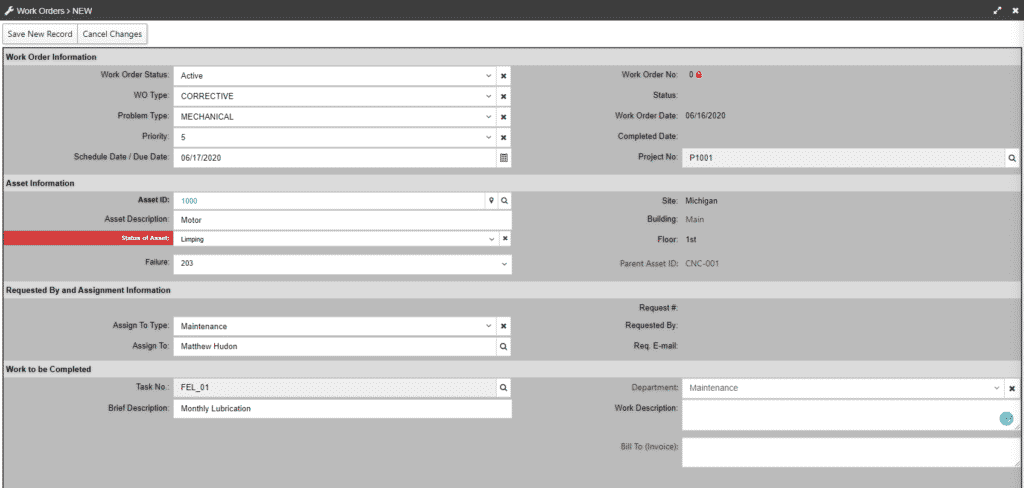
An example of a Work Order form in eMaint
Focused Improvement
This pillar requires the continuous improvement of functions and processes. Small improvements and efficiencies added to a large manufacturing process can add up to big savings for companies. Improvements could relate to improving downtime or speed of production, for example.
How can a CMMS help?
A CMMS provides the historical data required to realize these efficiencies. For example, maintenance technicians can analyze failures on assets to find root cause of the failure. This will enable the technicians to gather knowledge on how each machine tends to break down. This information also allows maintenance teams to make modifications to assets or processes to ultimately improve reliability.
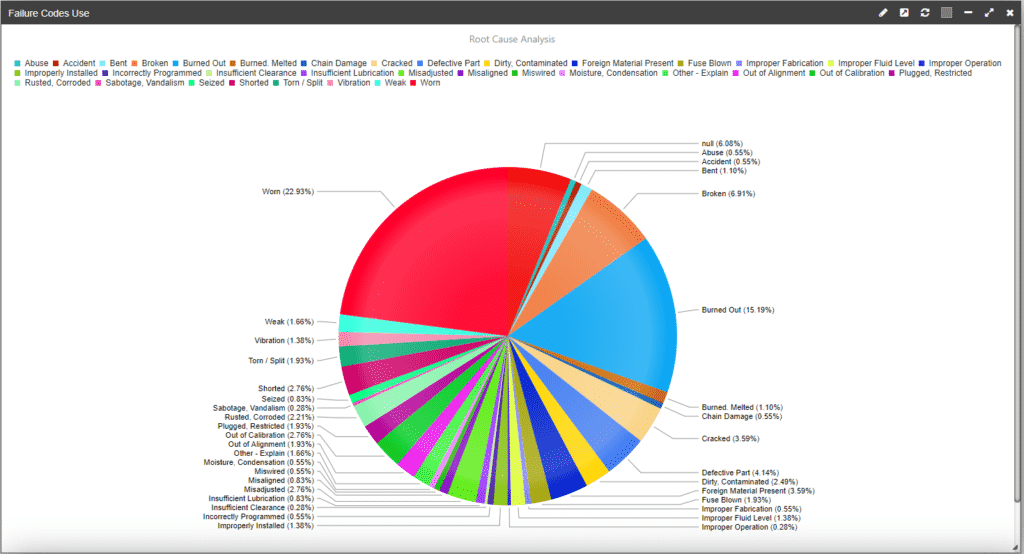
Failure codes report in eMaint
Planned Maintenance
Various planned maintenance approaches can work together to influence a proactive maintenance strategy. For example, preventive maintenance uses regular maintenance based on manufacturer specifications, while predictive maintenance uses real-time asset data gained from condition monitoring tools to create a more accurate picture of the health of an asset at any given time.
The benefits of a strong proactive maintenance strategy include:
- Identifying the root causes of machine failure
- Resolving problems before they become failures
- Extending the life of machinery and reducing downtime as a result of machine failure
How can a CMMS help?
By tracking trends, analyzing real-time asset data, and following manufacturer recommendations, organizations can prevent production waste, shorter equipment life cycles, increased equipment replacement and labor costs, and unplanned downtime. A CMMS enables users to plan, set up and track these jobs.
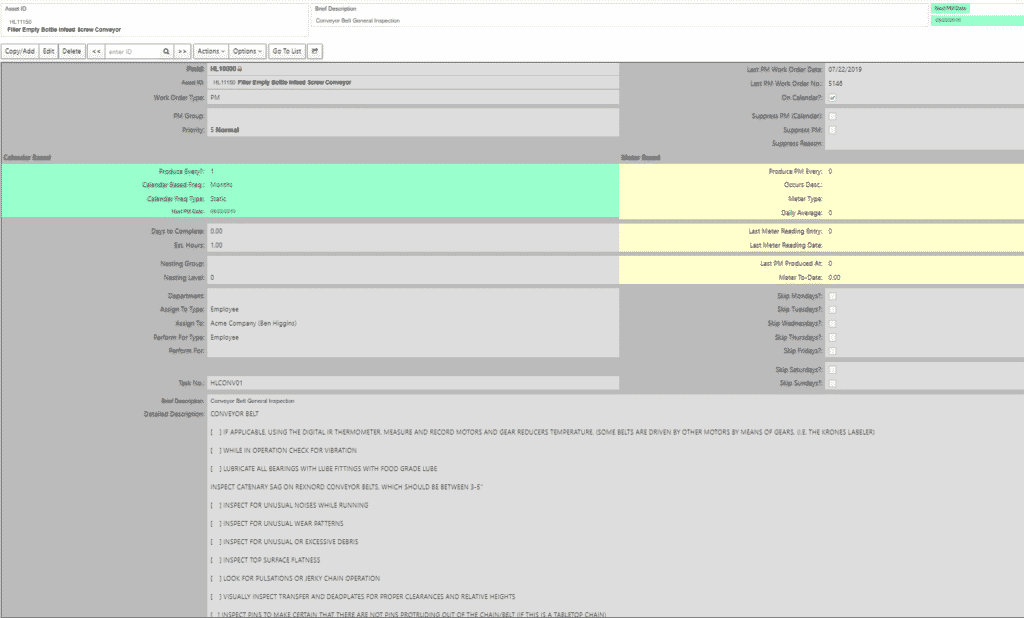
A PM form in eMaint. Jobs can be triggered based on a calendar or a meter
Quality management
To ensure that high-quality standards are kept, maintenance teams should introduce inspections into the preventive maintenance schedule to identify any problems in the production line that could compromise the final product’s quality.
How can a CMMS help?
While a PM schedule is required to ensure that quality is maintained through routine manual inspections, it may not be enough as there is still room for human error. It must then be reinforced by a predictive maintenance strategy deployed within the CMMS.
Real-time monitoring sensors can detect potential problems before they occur and trigger the intervention of a maintenance technician before a defect or breakdown occurs.
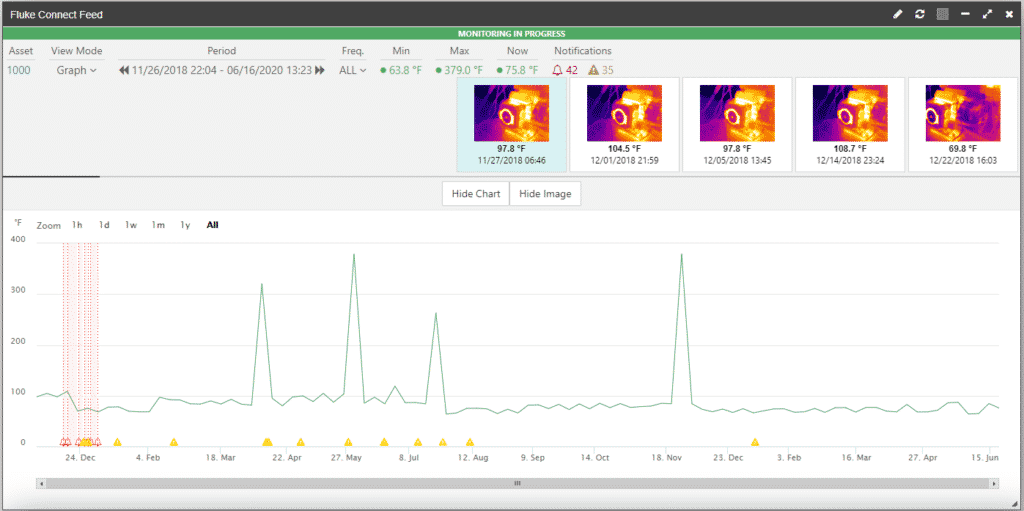
Real-time asset data can be sent to eMaint via Fluke Connect
Early/equipment management
This pillar of TPM prompts maintenance teams to analyze information on common equipment failures and share it with both internal maintenance teams and external equipment manufacturers. This allows machines to be redesigned or reconfigured to avoid common issues in the future.
How can a CMMS help?
Having complete historical data of an asset in a CMMS facilitates this pillar of TPM. The company can review breakdown causes and repairs. Consistent problems will be highlighted, and more permanent fixes can be made, from using a redesigned asset or making a change in the process of the maintenance schedule.

An example of a bespoke report in eMaint to show repeat breakdown causes over time
Education and Training
The lack of knowledge of maintenance teams can hinder a TPM program. As a result, this pillar focuses on training and education for machine operators, maintenance technicians and managers. Reinforcing knowledge through appropriate training aims to ensure that everyone shares the same objective regarding the TPM process and that technicians are fully trained and become experts in the equipment they maintain.
How can a CMMS help?
A CMMS can track training or certifications that may be required to complete a job. Alerts and notifications can be set up to see when training may be expired or if it is a requirement to complete a job.

A sample report in eMaint tracking training for employees and when it expires
Administrative & Office TPM
TPM aims to reduce the resources and time required for the admin and back-office functions—such as procurement—that are required for any manufacturing operation.
A streamlined back-office function is an essential part of any maintenance operation. It can ensure the right people are assigned to the right job and have the parts they need to complete the job.
How can a CMMS help?
A CMMS can help bridge the gap between maintenance and administration personnel. Both are required to run a successful manufacturing operation, but rarely work side-by-side. A CMMS can act as a single source of truth for both groups. It provides easy access to documentation such as photos and operating manuals that are stored in a, saving a lot of time when searching for them. Furthermore, Admin staff can leverage inventory and spare parts tracking in a CMMS to ensure parts are available for maintenance teams.
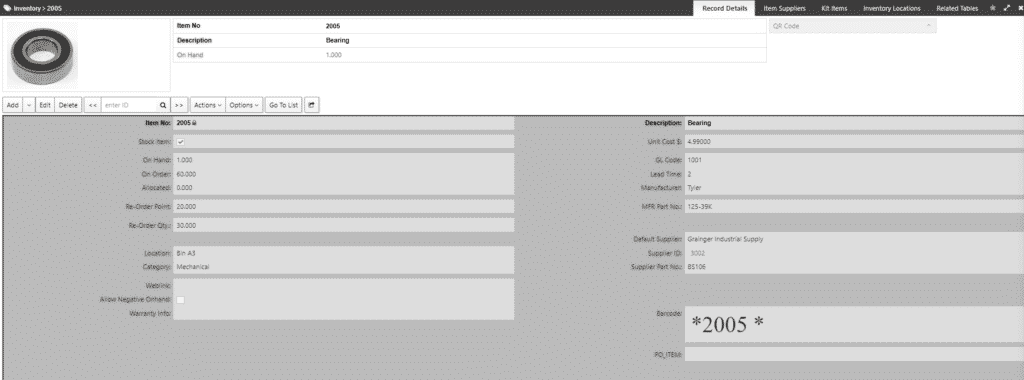
An example of a spare part being tracked in eMaint
Safety, Health, and Environmental Conditions
A manufacturing environment not only needs to be efficient, but it also needs to be safe. This pillar instructs maintenance teams to perform regular safety inspections in their preventive maintenance plan. This help companies adhere to any safety regulations that may apply to them
How can a CMMS help?
A CMMS allows companies to store information such as safety data sheets, standard operating procedures, and safety checklists. If required by auditors, the reporting feature in a CMMS will demonstrate that safety requirements have been followed.
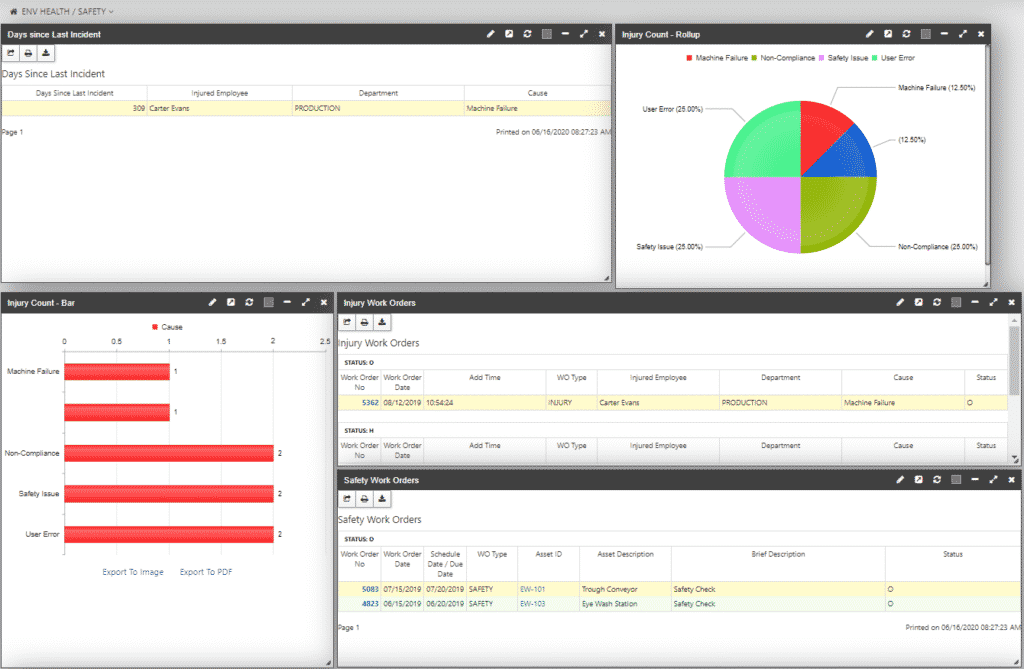
An example of a health & safety dashboard in eMaint
Related articles:
Moving from reactive to predictive maintenance
Preventive maintenance vs. predictive maintenance vs. proactive maintenance

